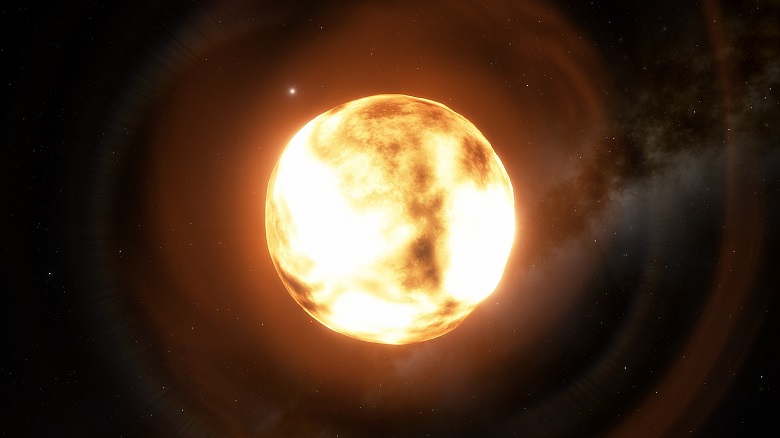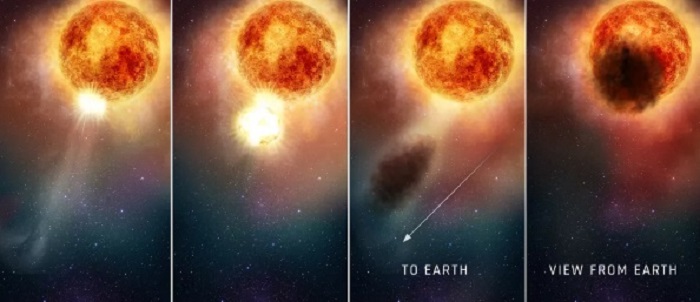The search for hypothetical axons flowing from Betelgeuse appears to be blank, but it helps physicists to set limits on their properties.
Deep within its scorching hot core, the red giant star “Betelgeuse” can produce tons of hypothetical dark matter particles called axons which, if present, would emit an alarm signal.
Recent research on such a puzzling emission has helped physicists set new limits to the axon’s hypothetical properties.
Appearing as a bright red dot in the constellation Orion, Betelgeuse is a well-studied star. It is cosmologically close, being only 520 light-years from Earth, and made headlines last year when it started mysteriously dimming, leading some researchers to believe it could be preparing to explode as a supernova.
Scientists say that since it is a very hot and large star, it may also be an ideal place to find axons. These specific particles can contain a million or even a billionth of the mass of an electron, and are ideal candidates for the formation of dark matter, the mysterious substance that greatly outnumbers ordinary matter in the universe but whose nature is still largely undetermined.
“As dark matter, axions shouldn’t interact much with luminous particles, but according to some theories, there is a small probability that photons, or light particles, could convert back and forth into axions in the presence of a strong magnetic field,” said Mengjiao Xiao, a physicist at the Massachusetts Institute of Technology (MIT) in Cambridge.
The thermonuclear core of a star is a good place to find copious amounts of both photons and magnetism, and Betelgeuse, which has 20 times the mass of the sun, could conceivably be “what we call an axion factory,” he said.
If axions are produced in this extreme environment, they should be able to escape outwards and stream towards Earth in large numbers. By interacting with the Milky Way galaxy’s natural magnetic field, these axions could be converted back into photons in the X-ray part of the electromagnetic spectrum, Xiao said.
Betelgeuse is in the stage of life where it should not emit much X-ray light, so any radiation detected from it may indicate the presence of Axions.
Xiao and his colleagues used NASA’s space-based Nuclear Spectroscopic Telescope Array (NuSTAR) to hunt for an X-ray signature coming from Betelgeuse, though they saw nothing beyond what was expected from ordinary astrophysical processes such as the small amount of X-rays that Betelgeuse is making.
The results, which Xiao will present on April 20 at the American Physical Society’s April meeting, suggest that photons and axions are at least three times less likely to interact than previously thoughts.
Even if researchers saw unexpected x-rays coming from a star, that wouldn’t necessarily indicate that the axions are real. Scientists have yet to rule out many non-dark matter explanations for the signal before switching to new physics.
Xiao said if the axions were found someday, could help astronomers better understand Betelgeuse. If the properties of the particles are known.
If the particles’ properties were known, telescopes trained on Betelgeuse might be able to finally pick up their signal, giving insights into processes happening in its belly and enabling researchers to calculate when it will actually explode, he added.
Sources:
- http://meetings.aps.org/Meeting/APR21/Session/X20.8
- https://www.livescience.com/axions-coming-from-betelgeuse.html
- https://telescope.live/blog/dimming-betelgeuse


